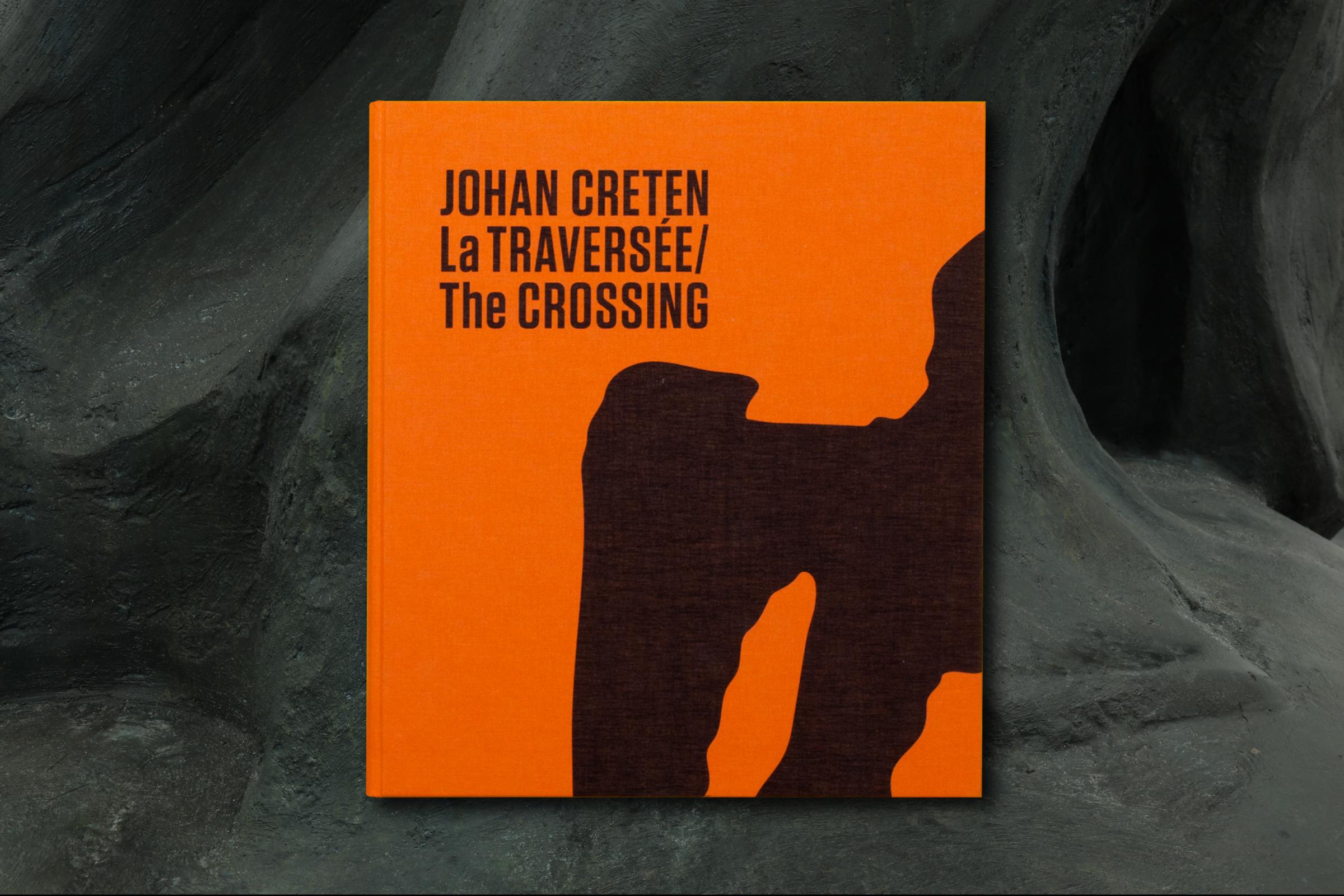
Catalog published on the occasion of the solo-exhibition of Johan Creten
"Naked Roots / Naakte Wortels"
at the Beelden aan Zee Museum in The Hague
« Naked Roots /
Naakte Wortels”
Beelden aan Zee Museum,
The Hague,
The Netherlands
2018
"Naked Roots / Naakte Wortels" focuses on the visible and invisible, obvious and obscure links between Johan Creten's creations and works from different countries and historical periods. The book contains nine exceptional historical objects from the artist's personal collection that are linked to his revolutionary work. For Johan Creten, the relationship between past, present and future is an unbroken chain. The exhibition "Naked Roots / Naakte Wortels" at the Museum Beelden aan Zee in The Hague, which led to the publication of this book, was conceived as a large "Studio space" where the works "bounced" off each other.

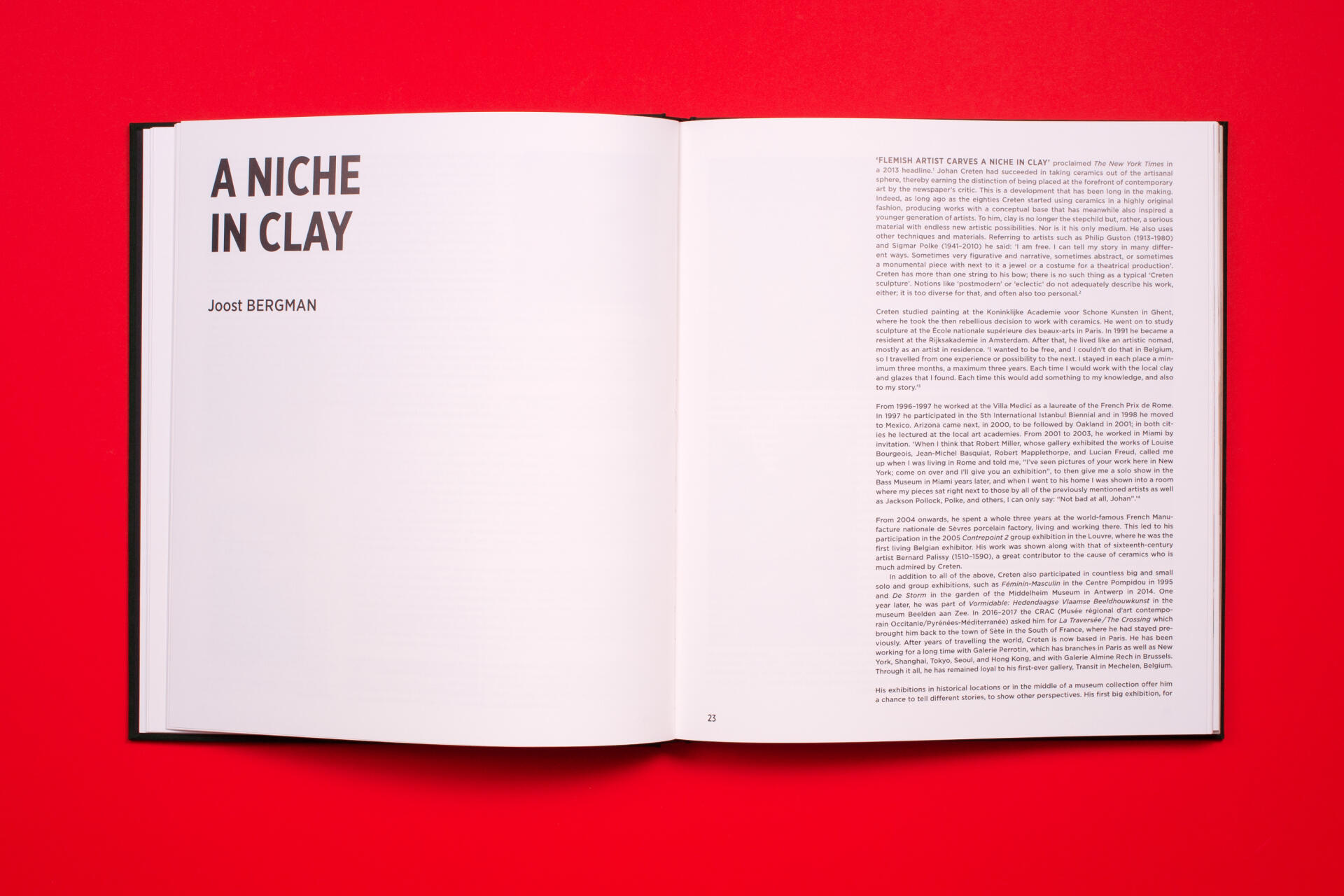
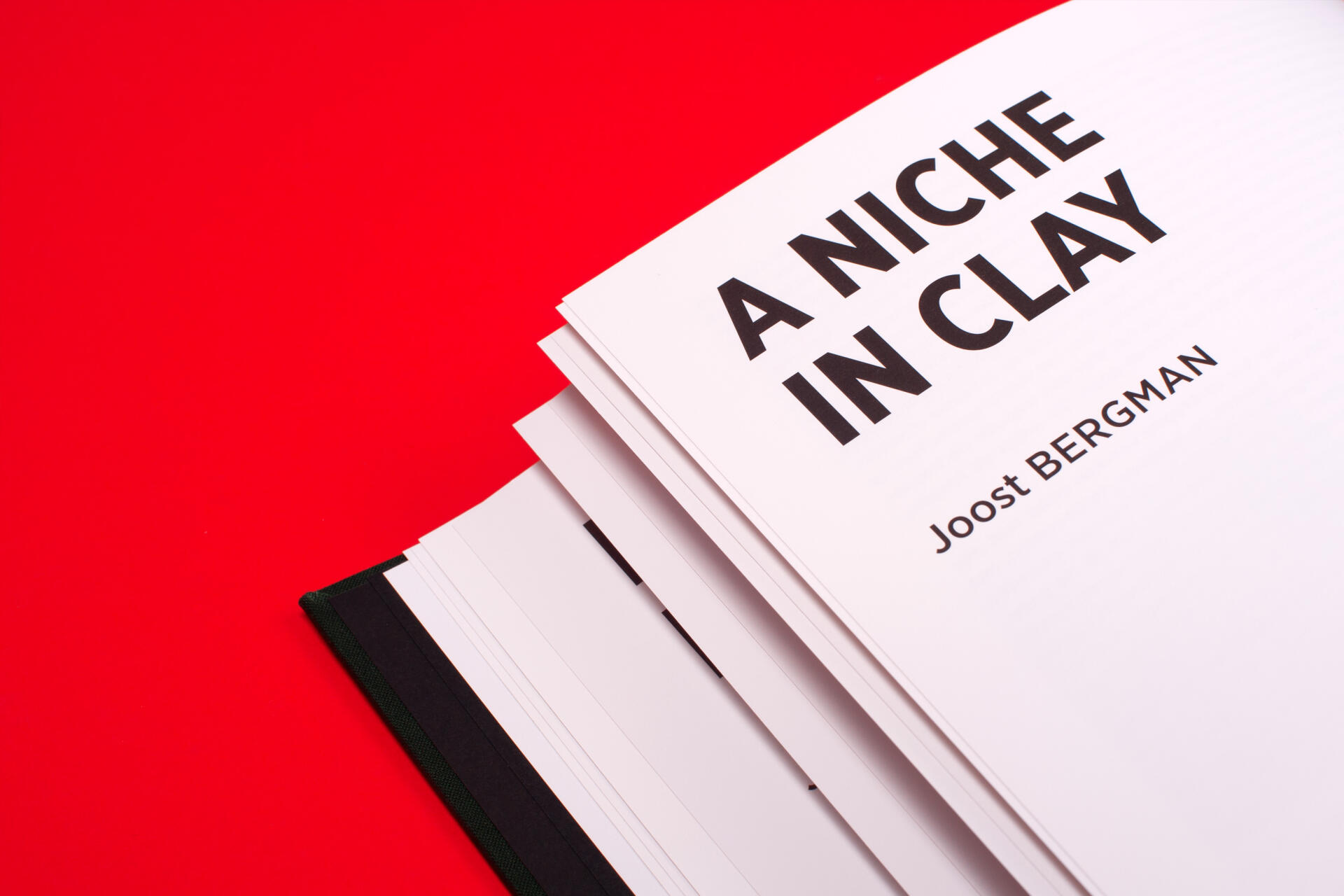
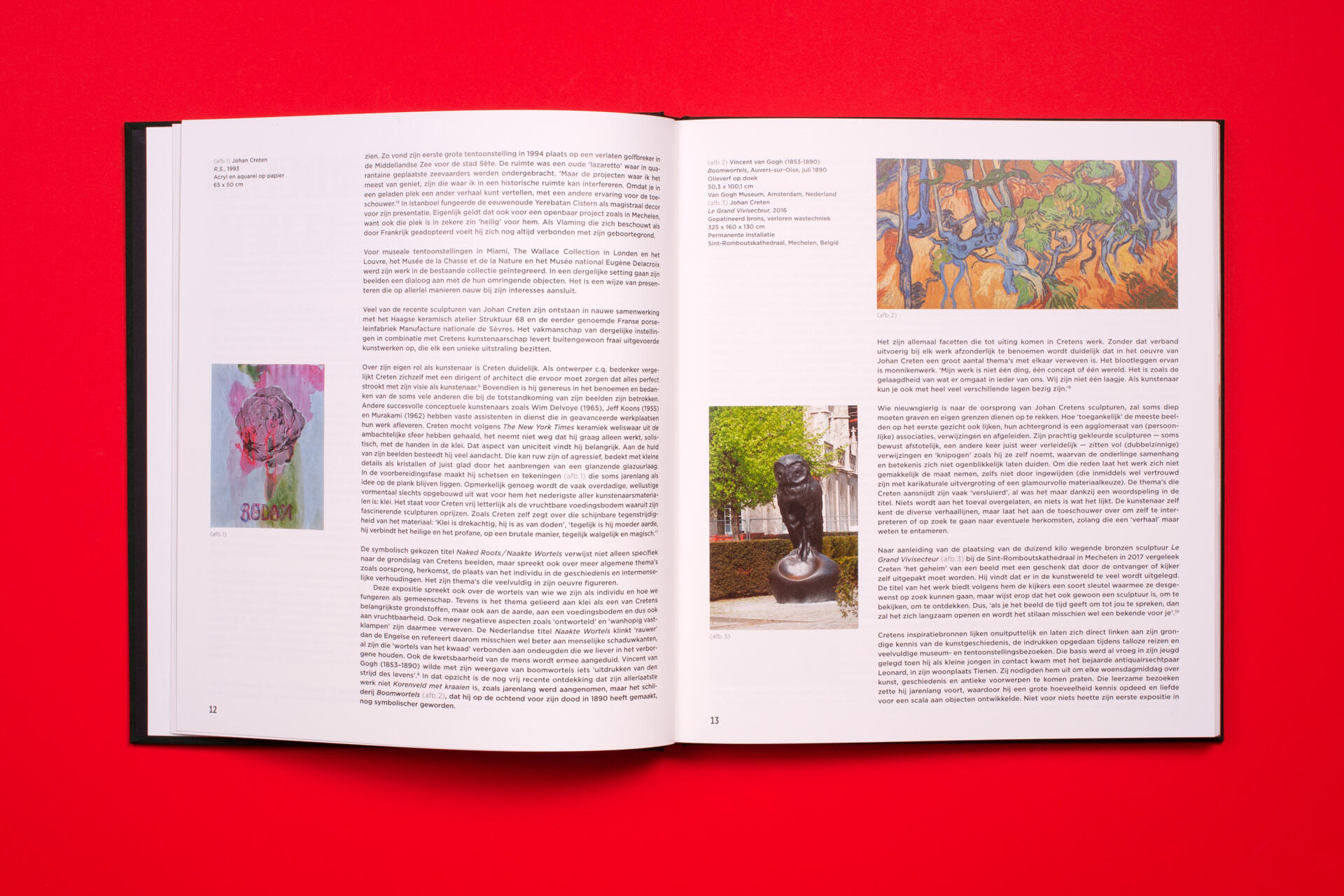
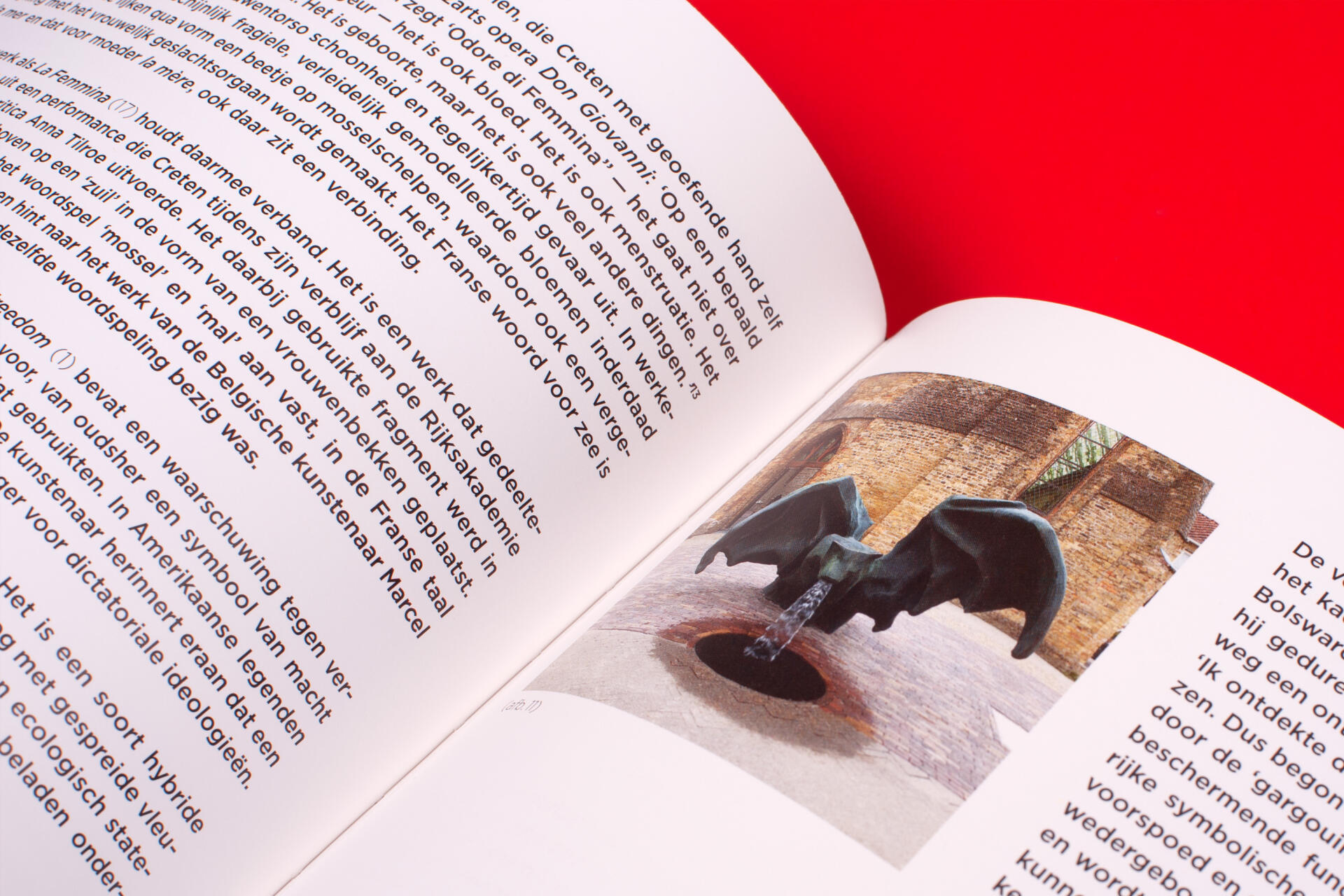
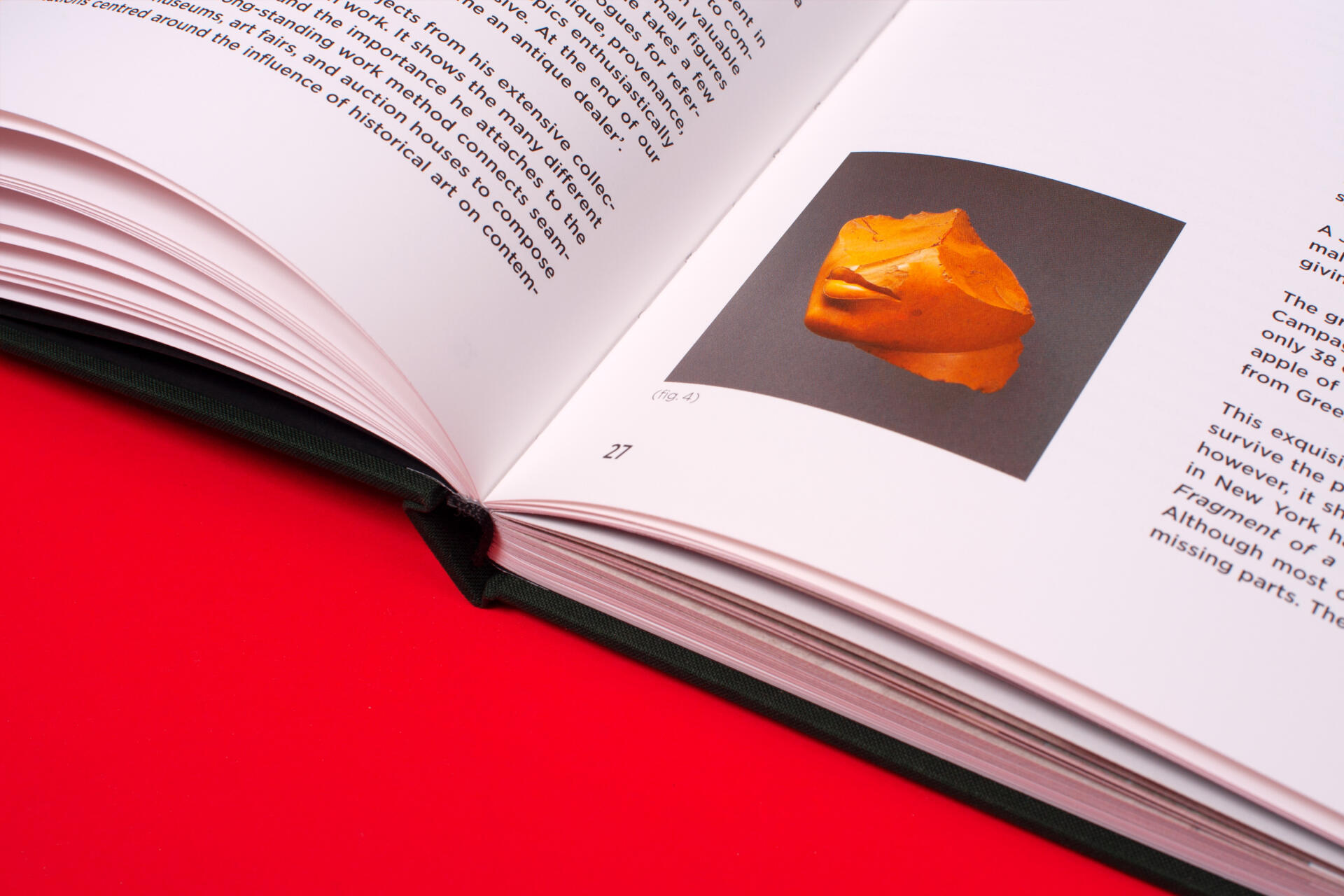
"‘FLEMISH ARTIST CARVES A NICHE IN CLAY’ proclaimed The New York Times in a 2013 headline. Johan Creten had succeeded in taking ceramics out of the artisanal sphere, thereby earning the distinction of being placed at the forefront of contemporary art by the newspaper’s critic. This is a development that has been long in the making. Indeed, as long ago as the eighties Creten started using ceramics in a highly original fashion, producing works with a conceptual base that has meanwhile also inspired a younger generation of artists. To him, clay is no longer the stepchild but, rather, a serious material with endless new artistic possibilities. Nor is it his only medium. He also uses other techniques and materials. Referring to artists such as Philip Guston (1913–1980) and Sigmar Polke (1941–2010) he said: ‘I am free. I can tell my story in many different ways. Sometimes very figurative and narrative, sometimes abstract, or sometimes a monumental piece with next to it a jewel or a costume for a theatrical production’. Creten has more than one string to his bow; there is no such thing as a typical ‘Creten sculpture’. Notions like ‘postmodern’ or ‘eclectic’ do not adequately describe his work, either; it is too diverse for that, and often also too personal."
Joost Bergman in "Naked Roots", 2018
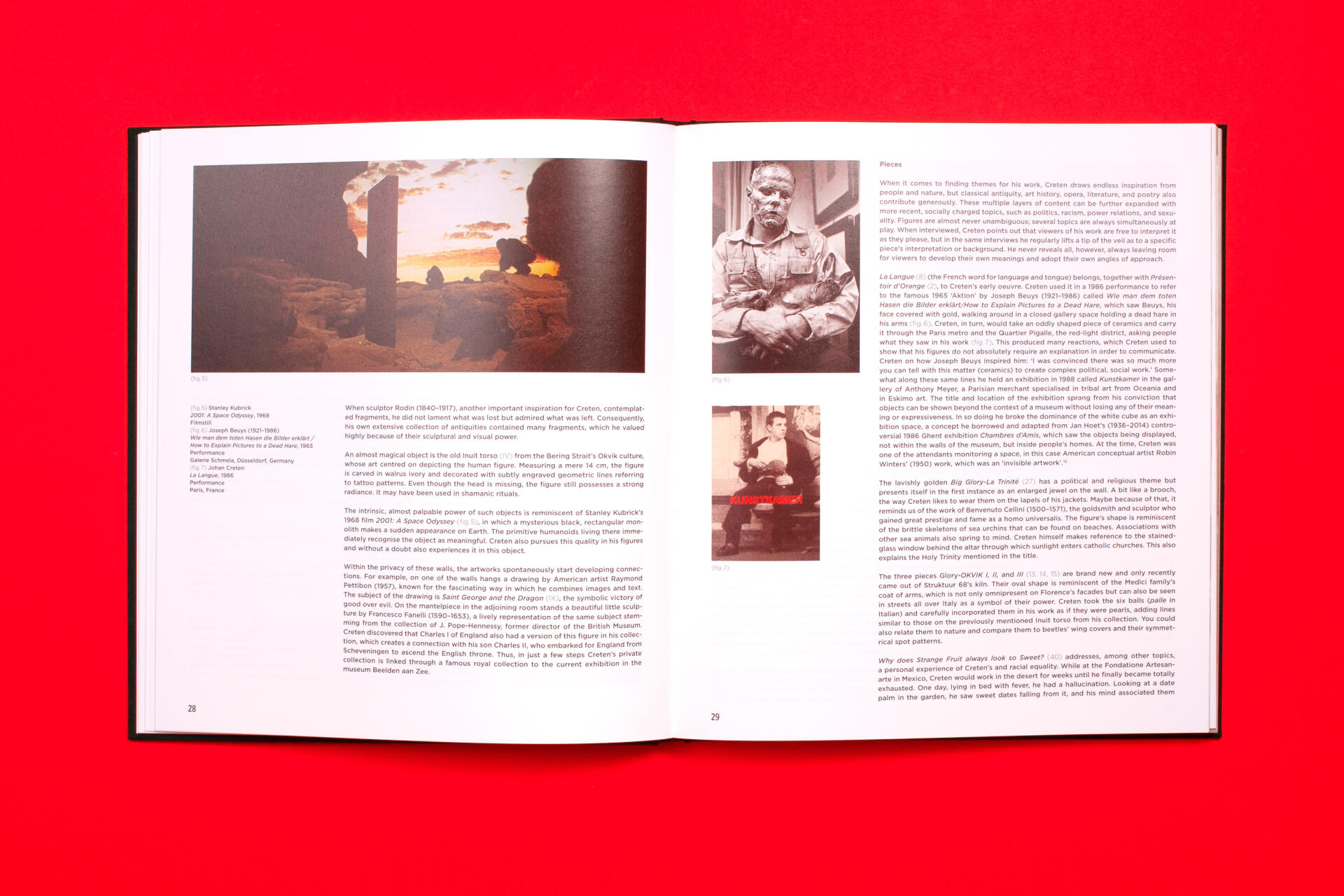
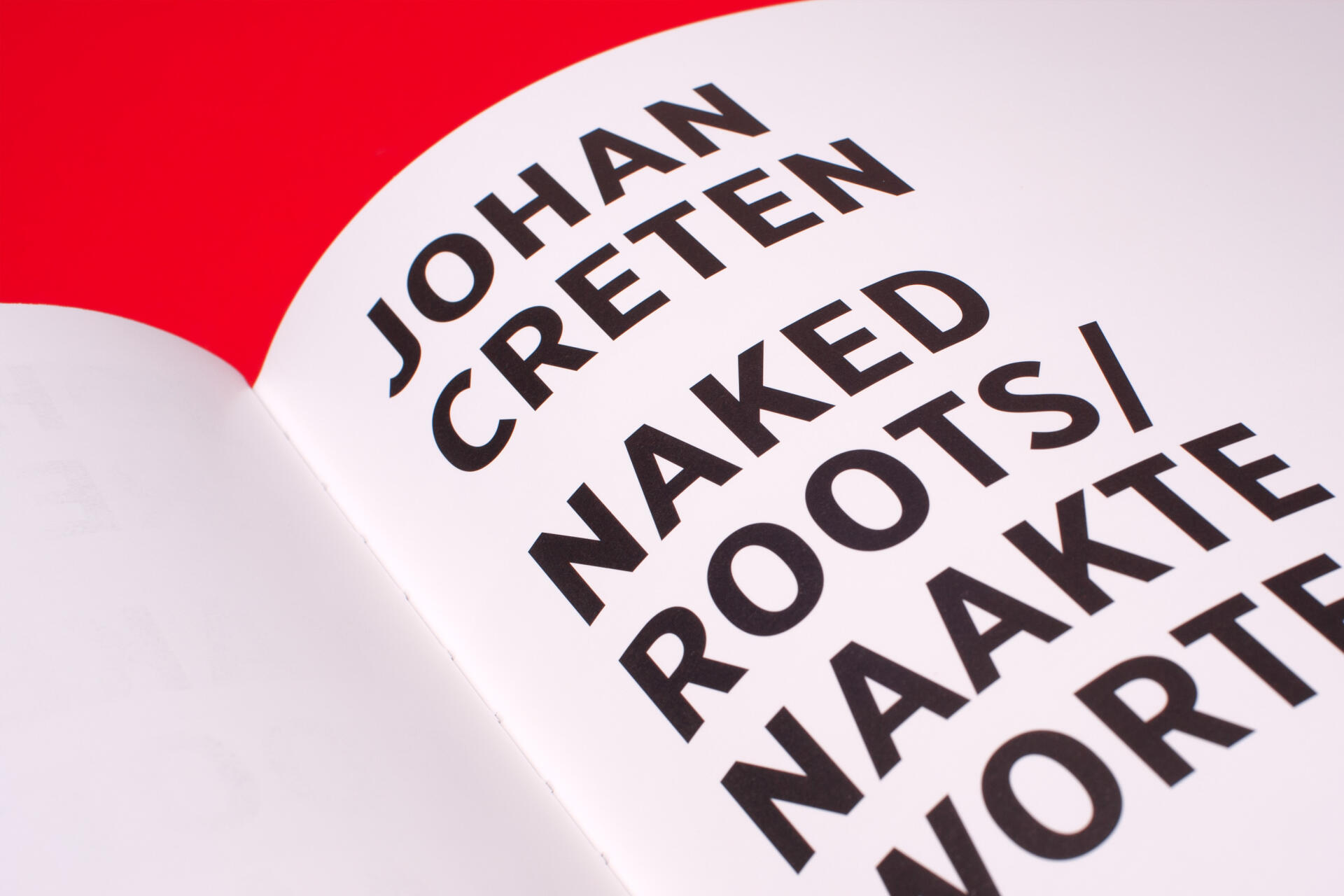
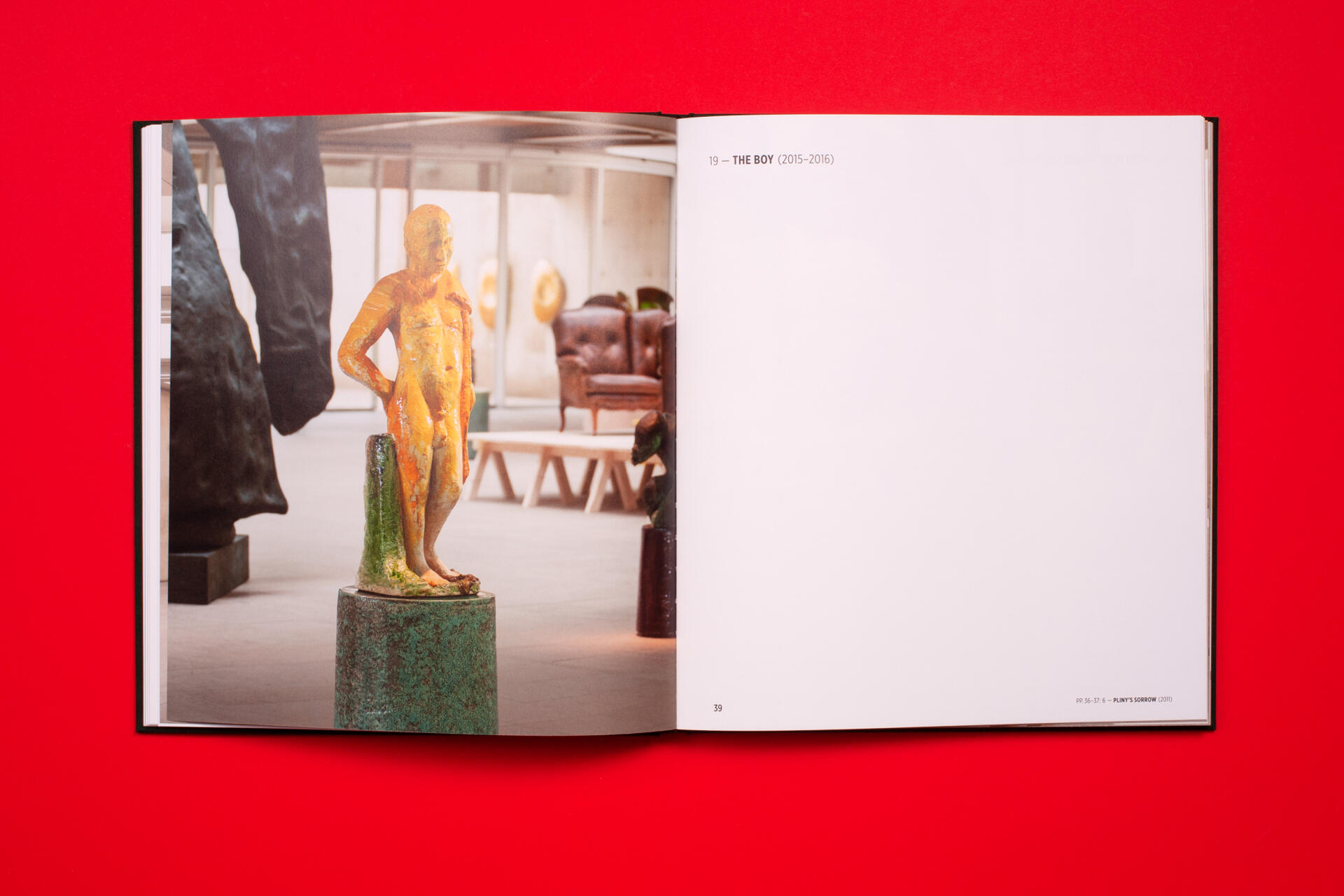
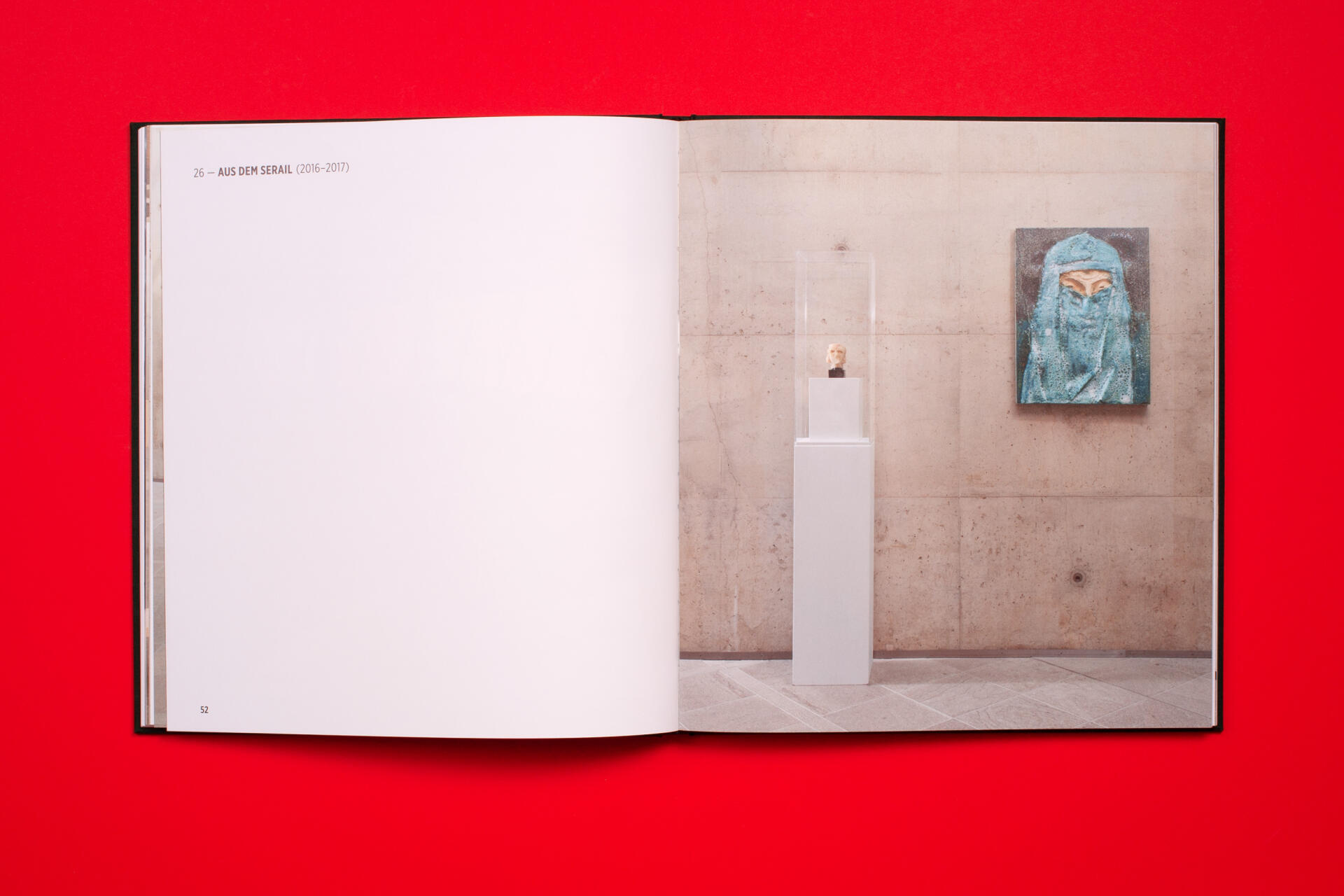
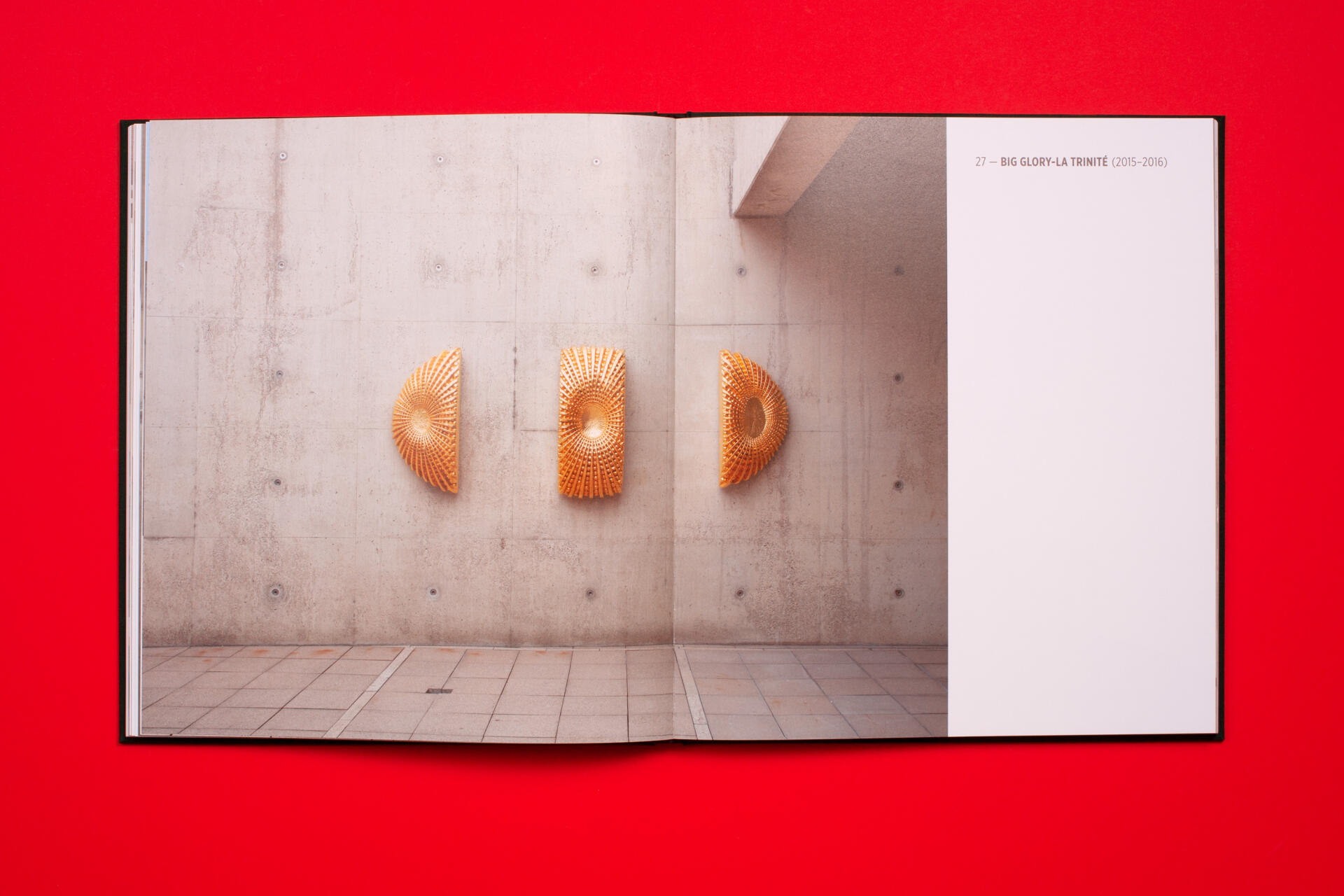
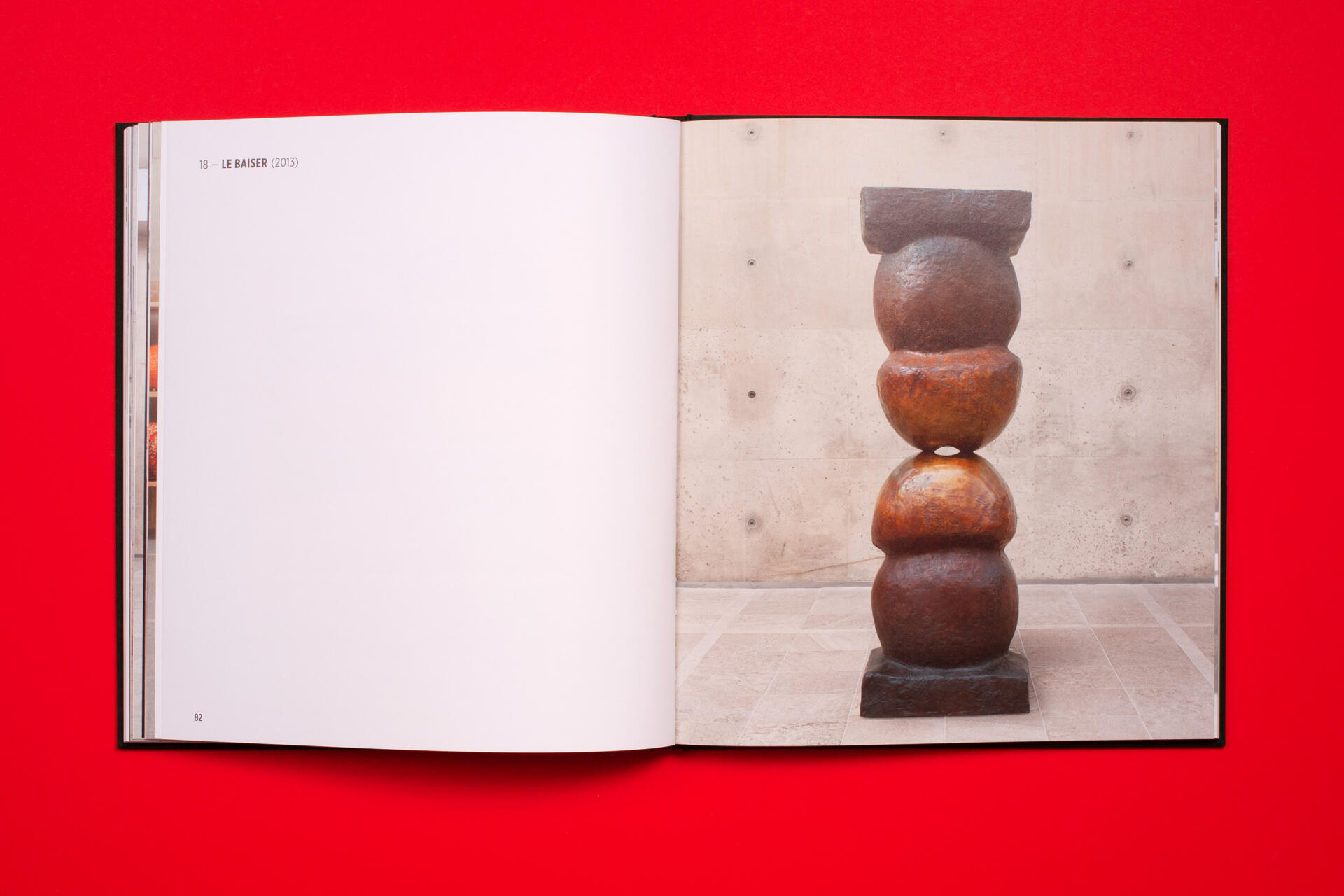
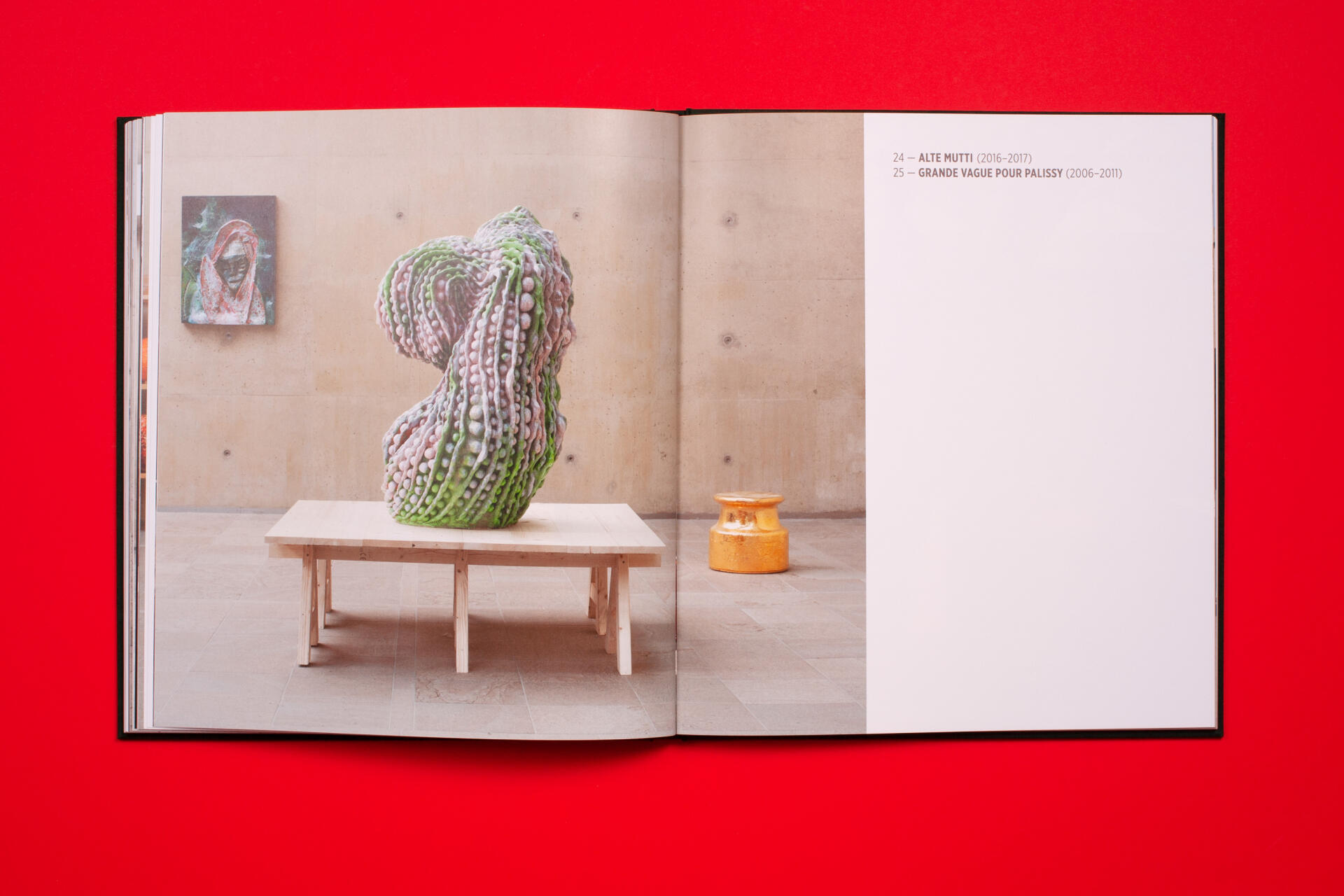
- TEXTS
Introduction : Jan Teeuwisse (Director in chief of the museum Beelden Aan Zee)
Text: Joost Bergman (Curator, art historian, art advisor and professor of art history at the VU University Amsterdam)
Translation : Xavier De Jonge
Language : English/Dutch
- FORMAT
28 x 31,5 cm
French format
120 pages
Hardcover
- COPIES
1st printed edition of 1.280 copies
- ISBN 978-9-401-455-121
- Published by
Lanoo, Belgium in collaboration with the Creten Studio and the museum Beelden aan Zee

